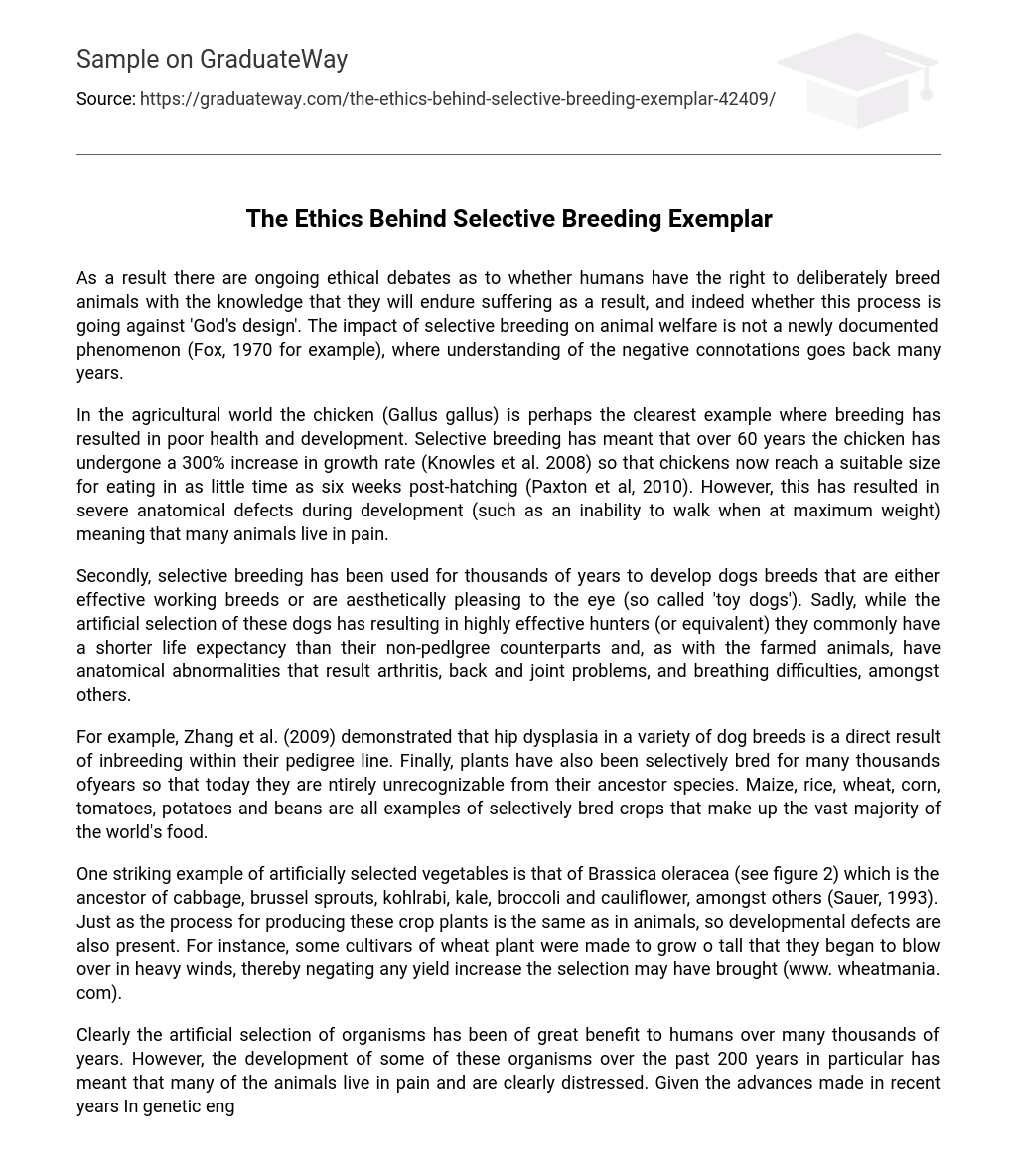As a result there are ongoing ethical debates as to whether humans have the right to deliberately breed animals with the knowledge that they will endure suffering as a result, and indeed whether this process is going against ‘God’s design’. The impact of selective breeding on animal welfare is not a newly documented phenomenon (Fox, 1970 for example), where understanding of the negative connotations goes back many years.
In the agricultural world the chicken (Gallus gallus) is perhaps the clearest example where breeding has resulted in poor health and development. Selective breeding has meant that over 60 years the chicken has undergone a 300% increase in growth rate (Knowles et al. 2008) so that chickens now reach a suitable size for eating in as little time as six weeks post-hatching (Paxton et al, 2010). However, this has resulted in severe anatomical defects during development (such as an inability to walk when at maximum weight) meaning that many animals live in pain.
Secondly, selective breeding has been used for thousands of years to develop dogs breeds that are either effective working breeds or are aesthetically pleasing to the eye (so called ‘toy dogs’). Sadly, while the artificial selection of these dogs has resulting in highly effective hunters (or equivalent) they commonly have a shorter life expectancy than their non-pedlgree counterparts and, as with the farmed animals, have anatomical abnormalities that result arthritis, back and joint problems, and breathing difficulties, amongst others.
For example, Zhang et al. (2009) demonstrated that hip dysplasia in a variety of dog breeds is a direct result of inbreeding within their pedigree line. Finally, plants have also been selectively bred for many thousands ofyears so that today they are ntirely unrecognizable from their ancestor species. Maize, rice, wheat, corn, tomatoes, potatoes and beans are all examples of selectively bred crops that make up the vast majority of the world’s food.
One striking example of artificially selected vegetables is that of Brassica oleracea (see figure 2) which is the ancestor of cabbage, brussel sprouts, kohlrabi, kale, broccoli and cauliflower, amongst others (Sauer, 1993). Just as the process for producing these crop plants is the same as in animals, so developmental defects are also present. For instance, some cultivars of wheat plant were made to grow o tall that they began to blow over in heavy winds, thereby negating any yield increase the selection may have brought (www. wheatmania. com).
Clearly the artificial selection of organisms has been of great benefit to humans over many thousands of years. However, the development of some of these organisms over the past 200 years in particular has meant that many of the animals live in pain and are clearly distressed. Given the advances made in recent years In genetic engineering, coupled with the movement towards free range meat, it may be time to ask ourselves whether this rocess has gone too far, and whether we are using our superior intelligence to the benefit of all organisms on the planet?





